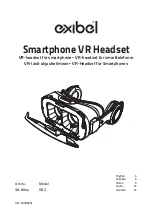
EN | 13
device. Search for “ISOtunes FREE Aware”. Pair and connect. You
will hear “Bluetooth Connected” once connected.
Charging
There are three batteries to charge:
1. Charging Case Battery
2. Left Earbud Battery
3. Right Earbud Battery
Charging the Case
Insert USB type C charging cable to charge the case. The charging
case battery indicator light will start flashing to indicate charge
level
Charging the Earbuds
Place earbuds into the charging case. The earbuds’ red indicator
light should be solid red, indicating that the earbuds are charging.
Only charge your ISOtunes FREE Aware with a Maximum 5 Volt
charger. Using a charger higher than 5 Volts could be dangerous
and may damage your ISOtunes product. Be especially careful
with “quick charge” or “turbo charge” chargers, which often
supply 9, 12, or 15 Volts. Your ISOtunes FREE Aware cannot be
charged at voltage levels above 5 volts.
Battery Capacity
ISOtunes® FREE Aware supports Bluetooth® battery level
indicator. This means that when connected to iOS devices, the
battery power status can be seen in the upper right corner of
the screen. Please use this as guideline - there are many factors
to battery level accuracy that influence this measurement. (For
example - although the battery power status may show 30%
battery power remaining, this may actually only be 5-10% on your
ISOtunes®.)
Noise Attenuation
This product has been tested to the European Safety Standard
EN352-2:2020 and the ANSI S3.19-1974 standard for a hearing
protector, with a Single Number Rating (SNR) of 32 dB and a Noise
Reduction Rating (NRR) of 25 dB. Full testing details are available
in the Noise Attenuation section of this booklet.
ANSI S3.19-1974
The level of noise entering a person’s ear, when ISOtunes® FREE
Aware headphones are worn as directed, is closely approximated
by the difference between the A-weighted environmental noise
level and the Noise Reduction Rating (NRR). Improper fit of this
device will reduce its effectiveness in attenuating noise. Consult
the enclosed instructions for proper fitting.
A1: Frequency (Hz)
A2: Mean Attenuation (dB)
A3: Standard Deviation (dB)
Example:
1. The surrounding noise level measured at the ear is 100 dB.
2. The NRR of ISOtunes® FREE Aware is 26 dB.
3. The noise level entering the ear is approximately equal to 74dB.
Please note that the NRR is based on the attenuation of
continuous noise and may not be an accurate indicator of the
protection attainable against impulsive noise, such as gunfire.
EN 352
B1: Frequency (Hz)
B2: Mean Attenuation (dB)
B3: Standard Deviation (dB)
B4: Assumed Protection Value (APV) (dB)
B5:
H = Hearing protection estimation for high
frequency sounds (f
≥
2000Hz)
M = Hearing protection estimation for medium
frequency sounds (500 Hz < f < 2000Hz)
L = Hearing protection estimation for low
frequency sounds (f
≤
500Hz)














































